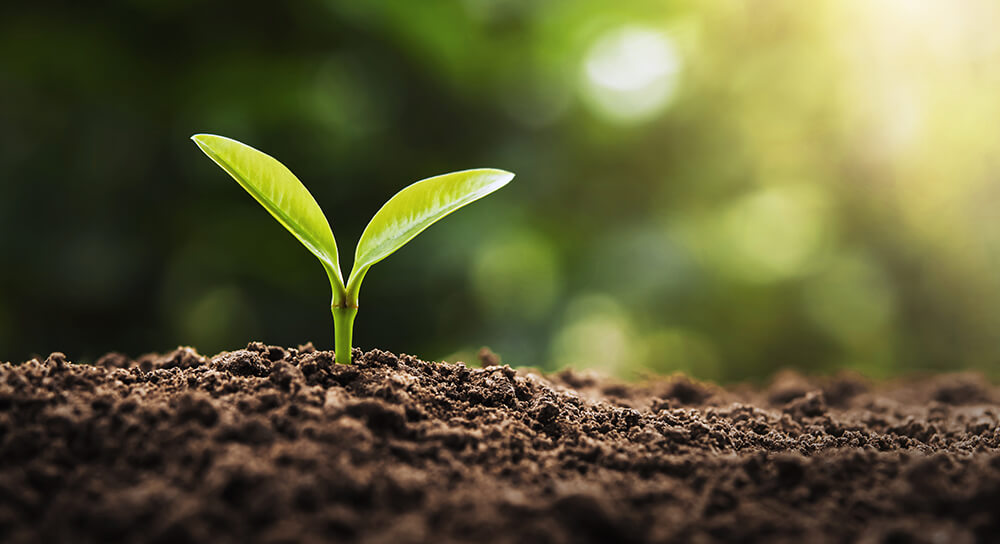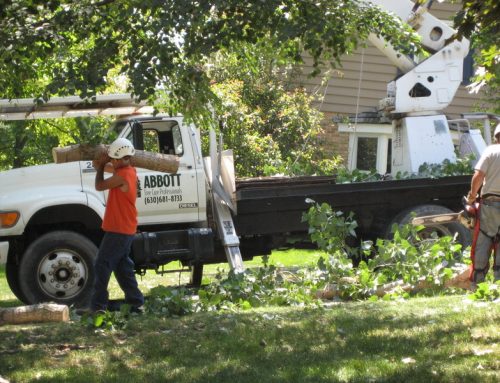Healthy, hydrated soil is essential for thriving plant life, but oversaturation can harm your garden. Too much water can lead to root rot, weak plants, and fungal infections, making your yard vulnerable to other issues. Poor drainage can worsen these problems, leaving trees and plants more susceptible to diseases. Fortunately, you can prevent your soil from becoming waterlogged and protect your plants from the perils of oversaturated soil. Here’s how to ensure a healthier landscape by managing soil moisture and improving drainage.
Soil Types
The type of soil in your yard dramatically affects how it handles water. Sandy soil has large particles that let water drain quickly, preventing oversaturation. Loamy soil, a mix of sand, silt, and clay, drains well while holding enough moisture for plants.
Heavy clay soil, typical in northern Illinois and Chicagoland, quickly becomes oversaturated. Because it is dense and compact, it leaves little space for water and air to move through. During heavy rain or excessive watering, clay soil holds onto water instead of letting it drain away quickly. This slow drainage can cause the soil to become waterlogged, leading to problems like root rot and fungal diseases.

What is oversaturation?
Oversaturation occurs when soil becomes overly wet due to heavy rain, poor drainage, or excessive watering. This condition can lead to root rot, weak trees, and fungal infections. Excess water can cause tree roots to fail, potentially leading to trees falling over and creating safety hazards. Proper soil management and drainage are essential to prevent these issues and maintain healthy trees.
Signs of Oversaturated Soil
- Standing Water: Pools of water that don’t drain away
- Yellow Leaves: A sign of nutrient deficiency due to too much water
- Squishy Soil: Soil that feels mushy and doesn’t dry out
How Oversaturation Affects Soil and Trees
- Root Problems: Waterlogged soil limits oxygen to the roots, causing them to suffocate and rot. This can lead to decay, making it harder for roots to absorb nutrients.
- Weak Trees: Heavy, wet soil can weaken roots and make them unstable. Over time, excess water can cause the roots to rot, weakening the tree’s foundation. This instability means trees are more prone to fall during storms or high winds.
- Fungal Diseases: Wet soil is an ideal breeding ground for fungal diseases, especially during the summer heat. Excess moisture encourages the growth of fungi that attack tree roots, stems, and leaves. Diseases like root rot, mildew, and blight thrive in waterlogged conditions. Trees like Oaks, Spruce, Crabapples, and Pines are more prone to fungal infections.
- Nutrient Issues: Oversaturation can cause nutrient imbalances, making it hard for trees to get enough iron and manganese. Poor health shows up as slow growth, sparse leaves, and a reduced ability to recover from pests and environmental stresses.
Preventing and Fixing Oversaturated Soil
Improve Drainage
Proper drainage can help redirect excess water away from plant roots. French drains, gravel-filled trenches, and a perforated pipe allow water to flow away from the problem area. Swales, or shallow ditches, can be used to direct water to a designated drainage area. Raised beds elevate the soil, improving drainage and preventing water from pooling around plant roots.
Choose the Right Plants
Planting trees in areas that handle heavy runoff can help, but it is important to choose the right species for the location. Some plants are naturally more tolerant of wet conditions, making them ideal for waterlogged areas.
Water-tolerant species such as willows, bald cypress, and river birch are well-suited for damp environments and can thrive where other plants might struggle. Native plants are often better adapted to local soil and moisture conditions, making them a reliable choice.
Soil Additives
Add organic matter to improve soil structure and drainage. Organic matter, such as compost and peat moss, can be mixed into the soil to enhance its texture and promote better water infiltration. These additives help break up compacted soil, allowing roots to penetrate more easily and water to drain more effectively.
Soil conditioners like gypsum can improve the physical properties of the soil, helping trees grow better and improving drainage. Regularly incorporating these soil additives can turn heavy, waterlogged soil into a healthier growing environment.
Regular Check-Ups
Have a professional check your trees and soil regularly to catch problems early. At Abbott Tree Care, our arborists can identify early signs of oversaturation, root problems, and other issues that may not be easily visible. We can also recommend specific treatments to address the issues before they become severe.

Too much water can harm soil health, especially in areas with clay soils. Improving drainage, choosing the right plants, and regularly checking soil conditions can help keep your garden healthy. Preventing oversaturated soil is key to a thriving garden. By spotting signs of waterlogged soil and managing moisture, you can protect your plants from root rot, weak growth, and fungal infections. Use proper drainage methods and the right soil additives, and keep an eye on your garden regularly.





